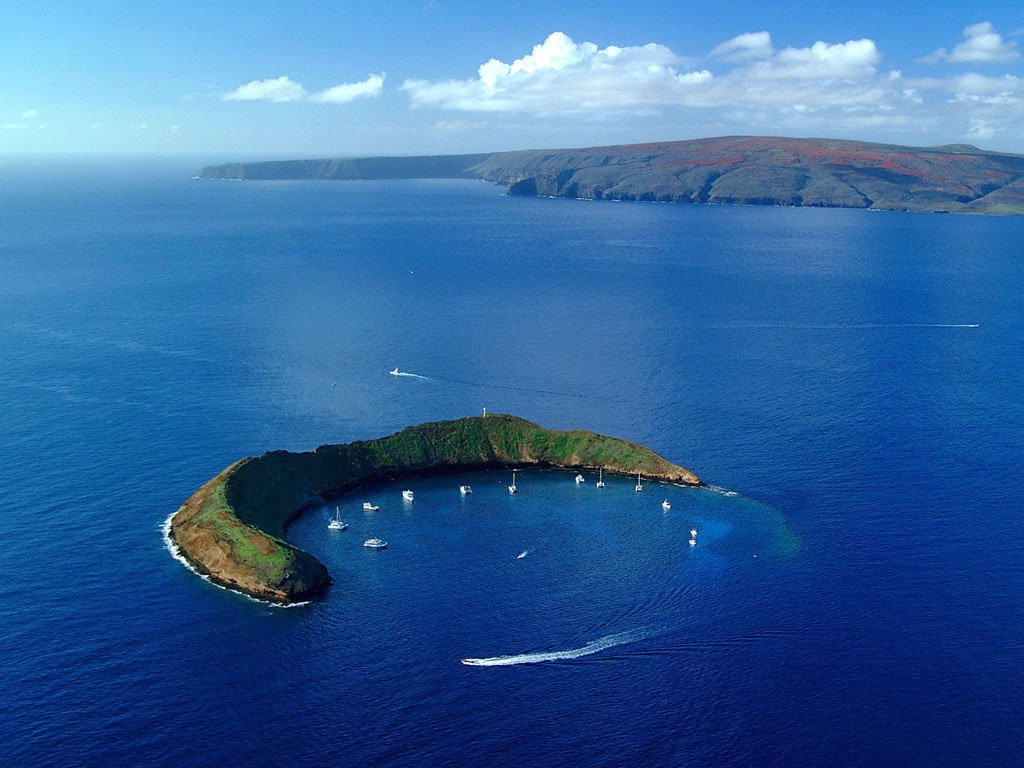Many guidebooks (including the most popular one) incorrectly attribute Molokini’s crescent shape to wave action – however, those familiar with the ocean here might notice a big problem with that theory:
The side that takes the brunt of the relentless pounding is the same side that’s still standing!
Geologists understand that this same formation is seen on land-based cones in Hawaii as well. We have strong, regular trade winds in Hawaii that typically blow from the same direction. When smaller matter is ejected by a volcano into the air, it is blown a bit downwind as it returns to earth. In the case of Molokini, the fallout was primarily small, and shifted enough south that the front-edge of the retuning debris fell back into the eruptive crater area, to be blown out again every time the cone erupted.
 MauiGuidebook.com
MauiGuidebook.com 